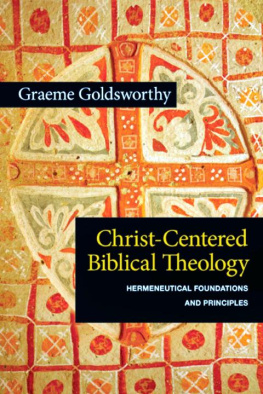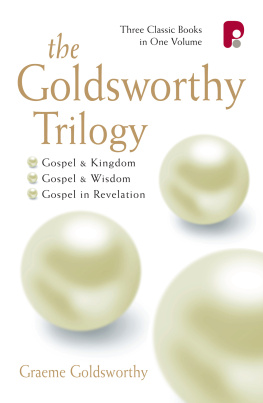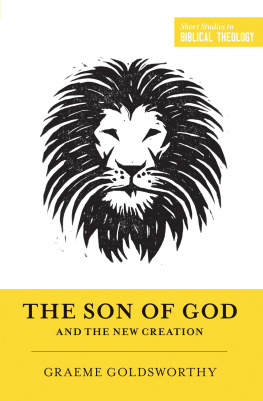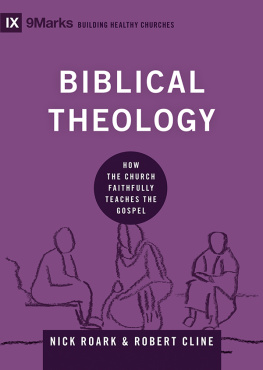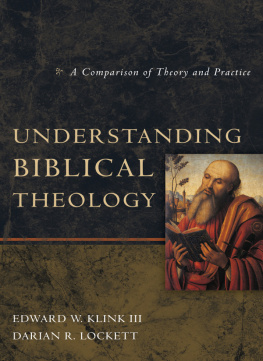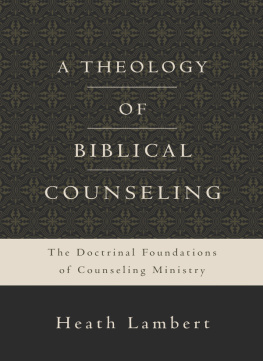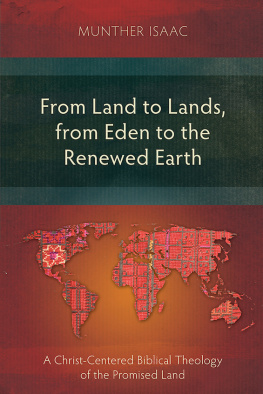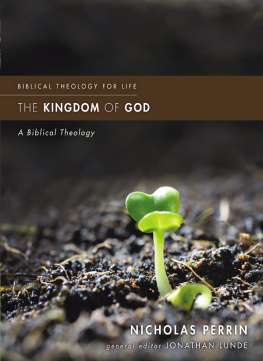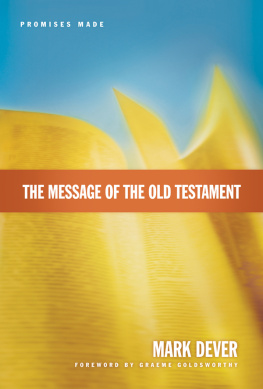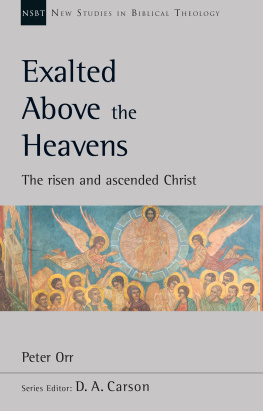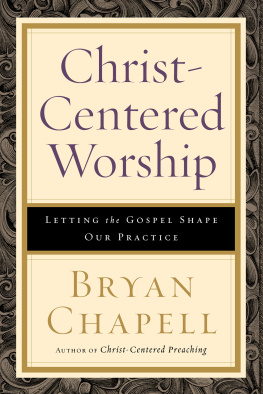Graeme Goldsworthy
HERMENEUTICAL FOUNDATIONS
AND PRINCIPLES





I wish to acknowledge my debt of gratitude to Donald William Bradley Robinson who, though being a leading Australian New Testament scholar, lectured me in Old Testament when I was a student at Moore Theological College. This book is my attempt to spell out the rationale for the method of biblical theology that Robinson taught me, which galvanized my enthusiasm for the subject. It is my tribute to him and his tireless endeavours to make the Bible more accessible to generations of students and, through them, to ordinary Christians. It is impossible to say how my thinking and practice in biblical theology would have developed if Donald Robinson had not been my teacher. But this I do believe: a great debt is owed to him for the considerable influence on many Christians that has resulted from his teaching and writing, and from that of some of his former students. The Robinson schema has not only found much acceptance here in Australia, but also in the UK, USA, Europe and in churches in Asia and Latin America.
Donald William Bradley Robinson

Figures
i The basic biblical timeline
2 The structure of revelation
3 Outline of Old Testament history
4 The biblical view of pre-Fall reality
5 The biblical view of all things summed up in Christ
6 A thematic approach to biblical theology - the temple
7 A thematic approach to biblical theology - prayer
Tables
i The content of the three-stage structure of revelation
2 The biblical narrative
3 Prophetic eschatology and the recapitulation of history

Specifically he directed that a substantial amount should be used to establish a college `for the education of young men of the Protestant persuasion in the principles of Christian Knowledge'. In 1856 the second bishop of Sydney, Frederic Barker, applied Moore's will to establish a theological college at the Moore property in Liverpool. Moore College, one of the oldest tertiary institutions in Australia, began with three students and, at the time of writing, had increased one hundredfold. In 1891 it moved to premises adjacent to the University of Sydney in the inner suburb of Newtown. Barker was a convinced evangelical who had been greatly influenced by Charles Simeon during his time in Cambridge. The development of evangelical Christianity in Sydney was not always smooth. But in 1934 the evangelical missionary bishop to western China, Howard Mowll, was appointed Archbishop of Sydney. He worked tirelessly to consolidate the evangelical character of Sydney Diocese. In 1935 Thomas Chatterton Hammond, director of the Irish Church Missions in Dublin, was appointed Principal of Moore College. Although Hammond was distinctive as to his emphasis and style, his determined evangelical stance has left an indelible mark on the College and the Diocese.
This heritage I have shared with generations of laity and clergy in Sydney. It is the heritage I share with Donald Robinson, to whom this volume is dedicated. I have watched its development under the leadership of the Archbishops who succeeded Mowll, and the Principals who succeeded Hammond. Archbishop Mowll ordained me to the Anglican ministry in 1958 and, in my time at Moore College as a student and junior tutor, I was privileged to sit under Hammond at the end of his ministry there. Donald Robinson and I share not only this ethos of Sydney Diocese but also that of the theology faculty at Cambridge. My debt to Robinson is the motive for this study of his approach to biblical theology as a distinct discipline. He was my teacher in theological college, became my colleague on the faculty and has remained a mentor and friend ever since.
It is fitting that I should also acknowledge my debt to other leaders and teachers who shaped my Christian thinking and living, and thus my writing. These include those who impacted me in Sydney: Marcus Loane, Broughton Knox, Alan Cole, Bruce Smith, Graham Delbridge, John Chapman and many others. In Cambridge I was privileged to be taught by Peter Ackroyd, Charlie I greatly benefited from the supervision of John Bright and Patrick D. Miller.
In 1973 and 1974 I was a visiting lecturer in biblical theology at Moore College. This gave me the opportunity to think through the Robinson schema and to apply it to an introductory course in the subject. The urging of the students that I should put it all in writing, a project I initially thought to be bordering on the ludicrous, finally prevailed and Gospel and Kingdom (1981) was the outcome. Paternoster published this and two further studies. My relationship with IVP began with the publication of According to Plan (1991), and I have been delighted to be able to maintain that relationship ever since. I wish to express my grateful thanks for the sensitive suggestions, comments and other help I received first from David Kingdon and, in more recent times, from Dr Philip Duce, who is Senior Commissioning Editor for theological books at IVP. My earlier Christian life was shaped by two main influences: my parish church in the Sydney Diocese, and the Sydney University Evangelical Union, an affiliate of the Australian arm of the International Fellowship of Evangelical Students. The latter had its beginnings in the InterVarsity Fellowship to which IVP is related. IVP, and the evangelicalism of both Sydney Diocese and Moore College, all have common roots in British evangelicalism. It is very satisfying to me to have a good working relationship with a publisher that shares my spiritual roots, my doctrinal convictions and Christian ethos. I have been encouraged to complete this present project by numbers of friends and colleagues who share my respect for Donald Robinson. To all of these I owe my gratitude, and especially to Miriam, my wife and partner in the gospel for forty-seven years, who has constantly stood by me and supported my endeavours.







Confessions of a biblical theology addict

